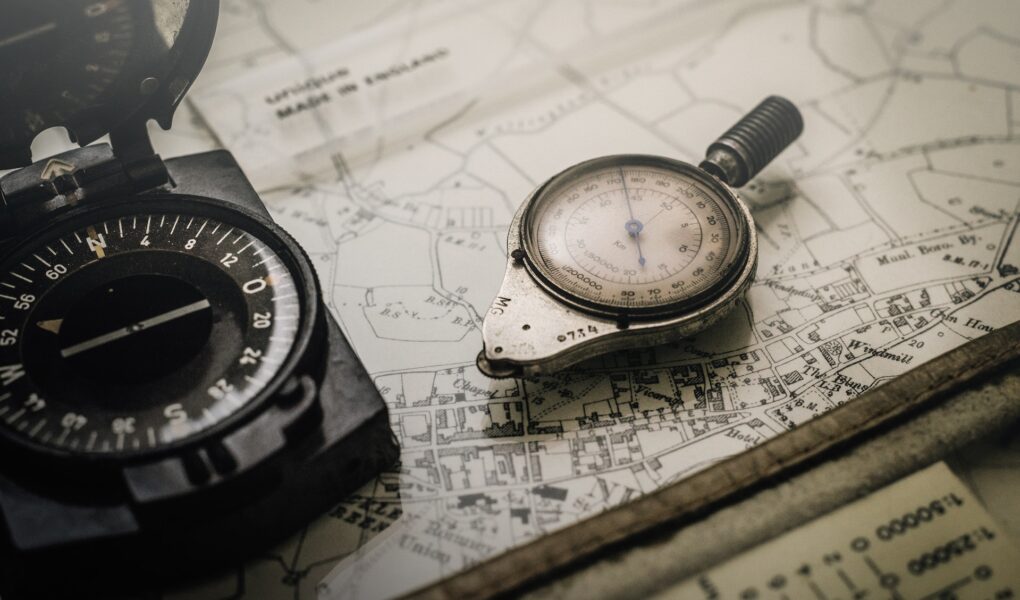If you are in the process of purchasing a new piece of land surveying equipment, you probably have questions like, “What are the different types of land surveying equipment?” The list includes tools like laser scanners, total stations, and compasses. These tools will assist you in determining the location of the boundary, identifying property improvements, and more. Besides, they’re instrumental in many other applications, too. You can also learn more through land surveying equipment fort worth TX.
Compasses
A compass is one of the tools used in land surveying. Traditionally, compasses were made of brass. However, wooden instruments with paper cards became common in the early nineteenth century. They were adequate for surveying purposes and carried the names of the 25 makers. While most modern compasses are brass, they still contain the same essential characteristics. A few notable features of a land surveying compass include its moveable band and variation arc.
The first difference between geographic north and magnetic north is the declination. A declination error can be anywhere from a few degrees to ten degrees. This may have been a factor in determining the correct survey lines, but declination values have been recorded throughout history to help surveyors avoid making errors in their work. Fortunately, you can find historical deals of declination online. You can use this information to correct your surveys.
Clinometers
Clinometers are instruments used by surveyors to determine angles of elevation about gravity. You can also use them for different purposes, such as providing details on the slope of a road or assessing the safety of a mountain pass for a vehicle. They are essential tools in many industries, from construction to land mapping. You can even use them to help hikers avoid dangerous terrain, such as landslides.
Compasses and clinometers are essential pieces of land surveying equipment. A compass is a critical piece of surveying equipment because it helps determine the distance between two points and the slope’s magnitude. A good compass is an essential piece of surveying equipment, as are transits and theodolites. Some popular options are the Brunton Omni-Slope Sighting Clinometer and the TruArc 20-Mirror Compass.
Laser Scanners
Land surveying has never been more efficient, thanks to laser scanners. Laser scanning provides accurate as-built data, whether a construction site requires the measurement of distances between two points or a large-scale demolition project. These devices take between a minute and five minutes to complete a scan so that they can cover large areas quickly. There are many variations of laser scanners, each with its advantages.
The BLK360 is the most compact imaging laser scanner, capturing high-resolution panoramic images and a high-accuracy point cloud. With the RTC360, laser scanning data is automatically pre-registered in the field, allowing quick quality control checks. The ScanStation P-Series offers survey-grade 3D laser scanning solutions for demanding projects. Its range, accuracy, and speed meet the needs of even the most demanding scanning projects. These devices are ideal for capturing the 3D geometry of buildings and civil infrastructure.
Total Stations
With total land surveying equipment stations, you can quickly survey your target. The device can scan the entire area in seconds and continues to aim at the target even when you move. You can even make measurements without the aid of a telescope. Total stations also use up-to-date image capture technology to produce high-quality images. They can work with digital design data or fully rendered models in IFC format.
The total station is used to measure angles, including horizontal and vertical. The electronic transit theodolite in a total station measures the angle between two points, usually 5 to 10 arc seconds. The entire station then uses a modulated infrared carrier signal to determine the angular distance from the target. They can measure distances up to a thousand meters and are accurate to 1.5 millimeters.
Magnetic Locators
Professional grade magnetic locators can be an essential part of land surveying equipment. They can pinpoint the exact location of iron objects, such as maintenance holes and utility covers. They are also necessary for locating underground tanks and pipes. In addition, some of these devices are portable so they can be carried easily in the field. Magnetic locators should meet industry standards for sensitivity, resolution, and portability.
The ML-1M from SSI is a complete magnetic locator with a three-button keypad, no menus, and easy operation. It also features a volume control built into the on/off key. Its monotube construction allows it to handle rough terrain. It has many features to meet the surveying needs of any professional. It also has an optional compass for the precise location of buildings and other objects.




